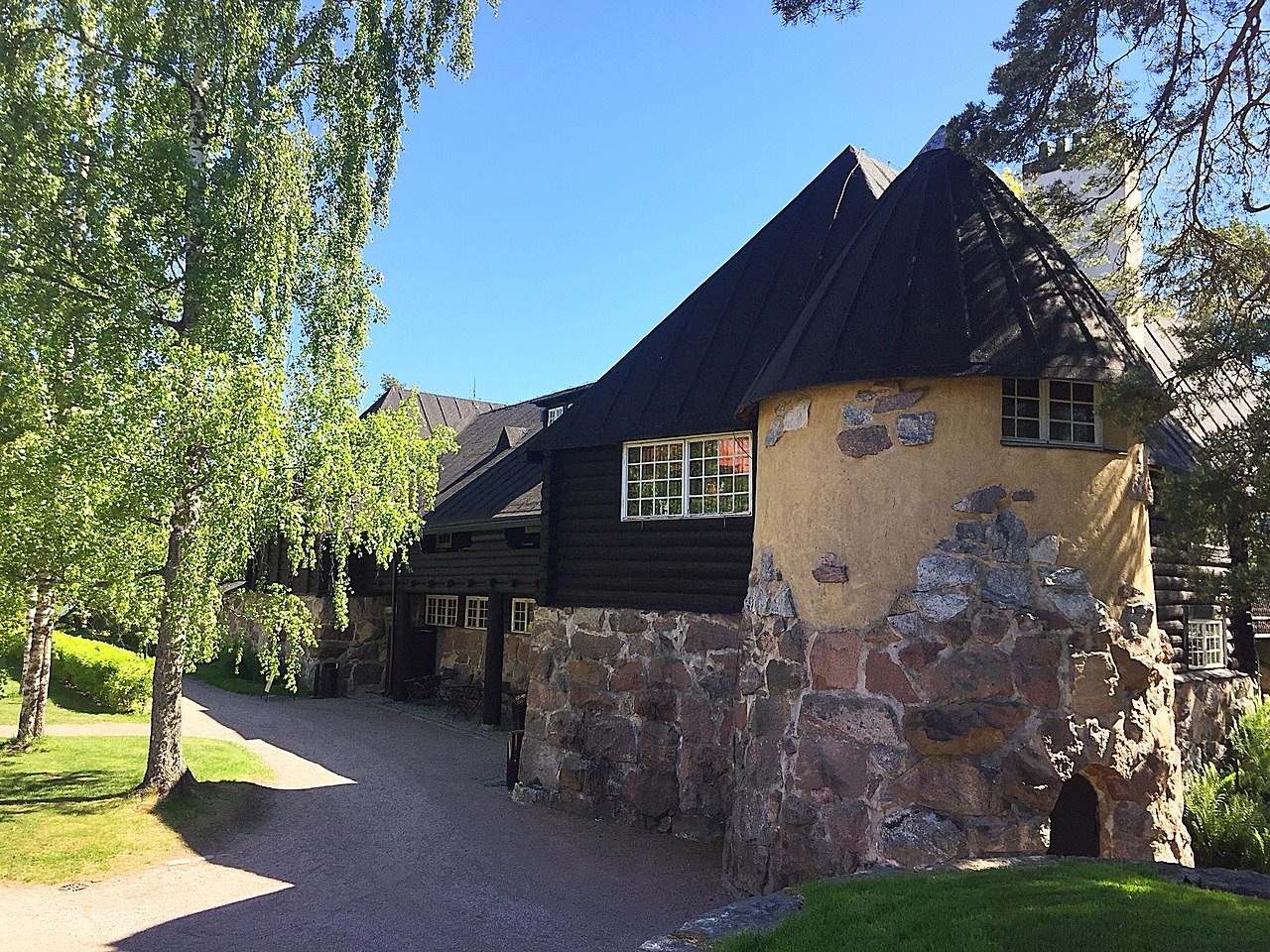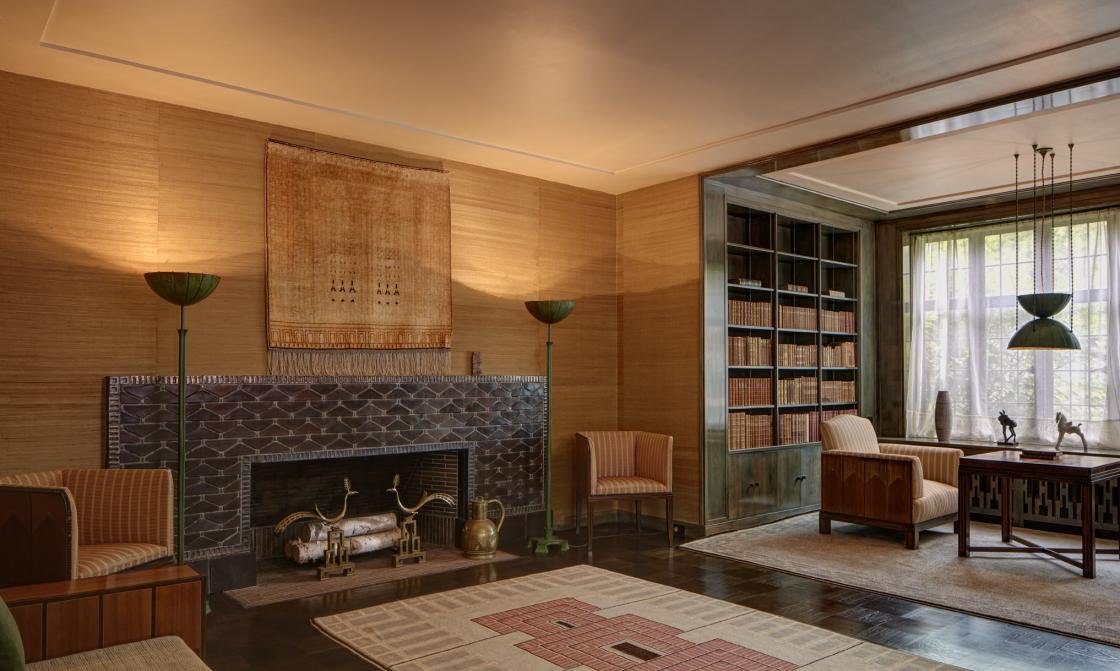Villa Hvitträsk: A Lakeside Summer Home in Southern Finland
Dining Room at Hvitträsk. Photographer, Markku Haverinen
As we remove our masks, we look forward to traveling. One enchanting destination is Villa Hvitträsk, a lakeside summer home in Southern Finland. At the turn of the 20th century, architects Eliel Saarinen, Herman Gesellius, and Armas Lindgren wished to escape urban Helsinki and built the compound in the Finnish National Romantic style. It served as their shared studio with separate family homes arranged around a central garden courtyard. Not only did they create important commissions there, such as the National Museum of Finland and the Helsinki Railway Station, but it was a gathering place for the cultural elite. Composers Jean Sibelius and Gustav Mahler, painter Axel Gallen-Kallela and sculptor Carl Milles were visitors to Hvitträsk.
Hvitträsk. Photographer, Ullake
While the architects found international inspiration in German Jugendstil and the British Arts and Crafts Movement, Kalevala, a Finnish epic, shaped their aesthetics. It is a collection of folklore and mythology compiled in the 19th century by Elias Lönnrot and written in the native language instead of the Swedish spoken by the upper class. Hvitträsk's shingled, stone and plaster façades, fortress-like shapes, and hand-crafted furnishings reference Finland's medieval history, Nordic legends, and the surrounding verdant landscape of these tales. Regarded as one of the most significant pieces of Finnish literature, Kalevala developed the country's national identity leading to Finland's ultimate Declaration of Independence from Russia in 1917.
Hvitträsk.Atelier. Photographer, Ilari Järvinen
Eliel Saarinen and his family eventually immigrated to the United States, and in 1925 he designed the master plan for Cranbrook Educational Community, an education, research, and public museum complex in Bloomfield Hills, Michigan. The National Historic Landmark features both Arts and Crafts and Art Deco styles. Saarinen taught there and became president of the Cranbrook Academy of Art in 1932. Known as an incubator for Midcentury- Modernism, the experimental art colony's students included Ray and Charles Eames, Florence Knoll, Jack Lenor Larsen, Harry Bertoia, and Saarinen's son Eero. The younger Saarinen followed in his father's footsteps and is considered one of the masters of American 20th-century architecture.
Saarinen House. Cranbrook Academy of Art, Bloomfield Hills, Michigan




